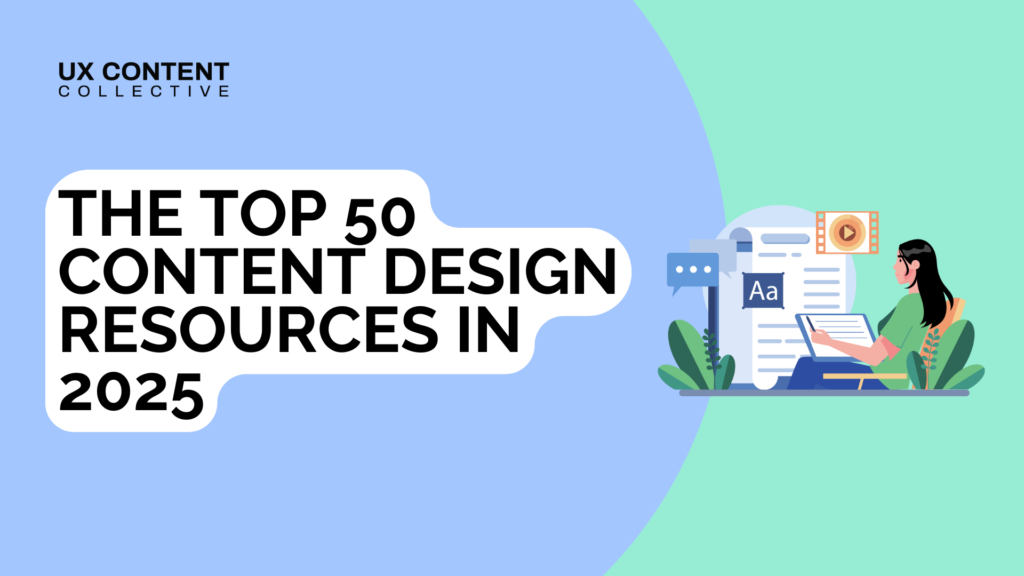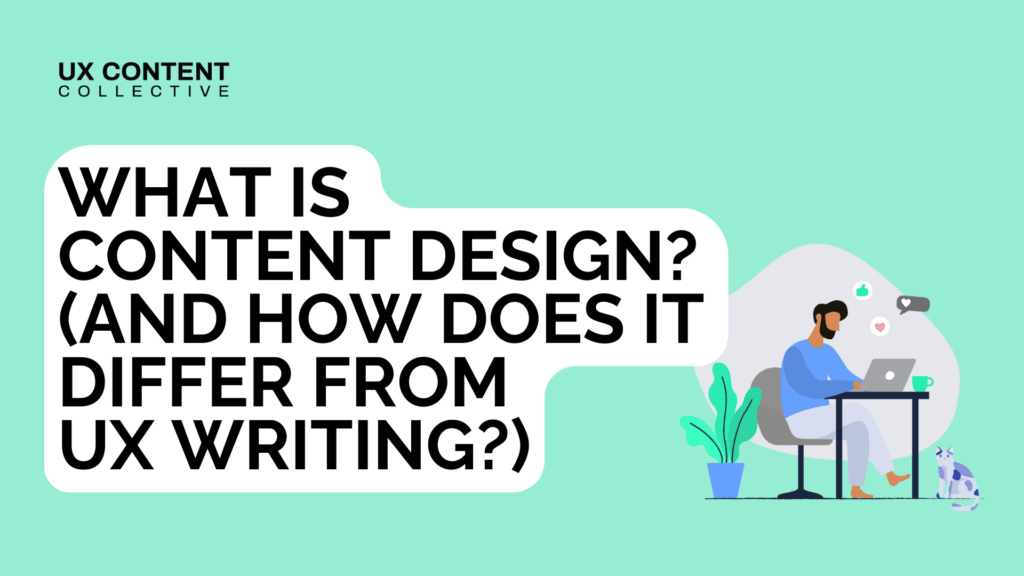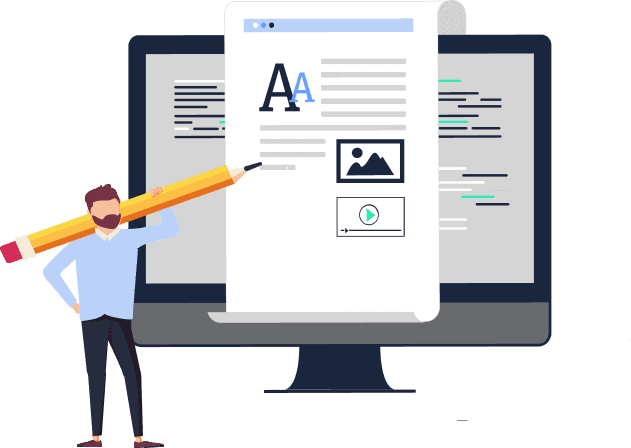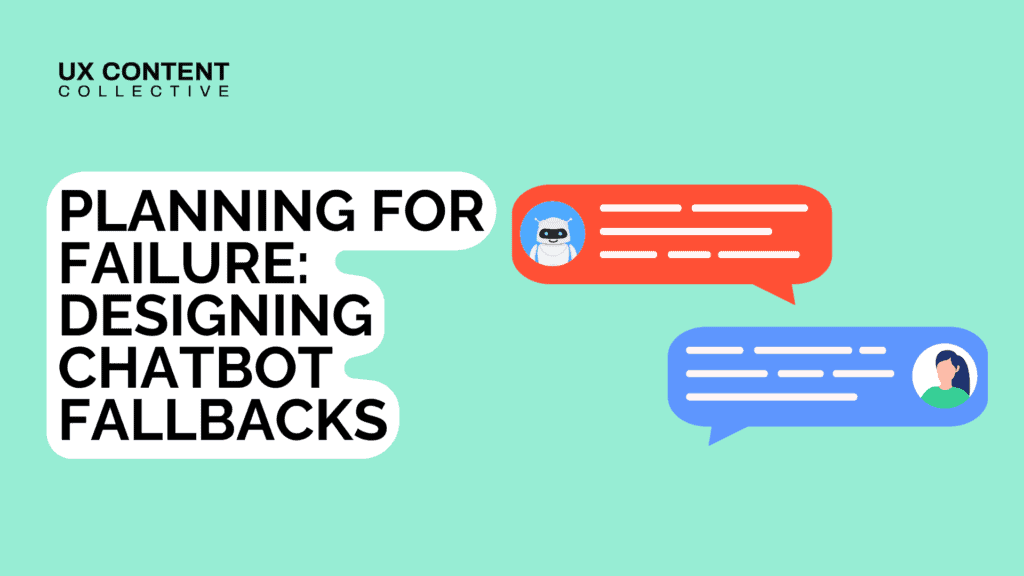
What is content design?

Patrick Stafford

Interested in UX writing and content design?
Explore our content design and UX writing training:

How is design impacted and shaped by content?
Content is not simply a layer applied at the end of a design process. It is an essential part of the product architecture. Content shapes interactions, establishes user trust, facilitates comprehension, and drives action across increasingly complex ecosystems.
Content design has emerged as a distinct discipline because users engage with products across a web of touchpoints: mobile apps, web platforms, onboarding flows, help systems, notifications, AI-driven interfaces, and more.
Designing effective content for this environment requires more than choosing the right words, it demands thoughtful structuring of information, clear communication of intent, and a strategic understanding of user needs.
Rather than positioning content as decoration or support, content design integrates content into the very foundation of how a product works. It focuses on the user’s experience of information: when, where, and how they encounter it, and how effectively it enables them to achieve their goals.
As products become more dynamic and interconnected, content design provides the framework needed to maintain coherence, usability, and accessibility.
The history of content design
The term “content design” was first popularized by Sarah Winters during her work at the Government Digital Service (GDS) in the United Kingdom. Winters introduced the term as a more strategic, user-centered discipline focused on solving user problems through clear, purposeful content (and wrote a book on the topic).
From there, the term expanded globally. Content design gained recognition beyond government, especially among technology companies, nonprofits, and education providers aiming to create accessible, effective digital products.
We tend to think that the shift to “content designer” over “UX writer” is part of Content Design 3.0 – a shift from focusing on individual user flows to thinking about content as a more dynamic and interconnected system.
The move to content design in the 2010s reflects a broader evolution in how organizations view content roles.
First stage: Content seen as a finishing touch. Writers added late in the process to “fill in” designs.
Second stage: UX writers recognized as essential to guiding user action and clarity within interfaces.
Third stage: Content designers influencing not just the words, but the structures, systems, and strategies behind them.
This shift demands:
- Deeper integration into product discovery and definition phases.
- Stronger alignment with research, data, and product strategy teams.
- Greater influence over product and service architectures.
It reflects the simple reality that users don’t separate “content” from “experience.” To them, the words, structures, and flows are the product.
Content design ensures that this experience is intentional, coherent, and human-centered.
The evolution of content design
Defining content design: meaning, scope, and practice
Content design is the practice of identifying user needs and designing content solutions that meet those needs within the broader context of a product or service.
This involves:
- Researching and validating user needs through qualitative and quantitative methods.
- Structuring content to support task completion, comprehension, and engagement
- Creating scalable systems and frameworks for consistent content delivery
- Collaborating across disciplines to embed content decisions into product architecture
- Evaluating and refining content based on performance metrics and user feedback
Content designers don’t just craft individual pieces of microcopy. They shape information ecosystems. They consider how a single message fits within a broader user journey, how variations of that message must adapt across markets, and how systems can be designed to scale intelligently without loss of quality.
Unlike UX writing, which often focuses on phrasing within established flows, content design refers to a more strategic and systemic focus. It informs the structure of those flows themselves. However, it should be pointed out that many roles titled “UX Writer” are expected to practice these principles as well.
How content design extends beyond UX writing
Although content design and UX writing share common foundations – clarity, usability, user-centricity – their scope, methodology, and strategic impact differ in important ways.
Scope:
UX writing typically concerns itself with writing effective microcopy: interface labels, error messages, onboarding instructions, tooltips.
Content design encompasses not only the text itself but the underlying information architecture, the structure of interaction flows, and the orchestration of content across entire journeys.
Research:
UX writers may consult existing research to inform their language choices.
Content designers are often directly involved in identifying content-specific user needs, running content-focused research studies, and applying those findings to system-wide decisions.
Strategic influence:
UX writing frequently operates reactively: given a design, what words best support the intended action?
Content design operates proactively: what user needs must this flow serve, and what structures, including content patterns, best achieve that?
Systems thinking:
UX writing can be tactical.
Content design demands systemic thinking: defining taxonomies, creating reusable content models, and ensuring scalable, flexible content delivery across different environments.
This is not a hierarchy – good content design incorporates excellent UX writing. Rather, the distinction reflects a broadening of scope and depth of responsibility.
Importantly, we should point out that there are plenty of jobs where the title is interchangeable. As Scott Kubie says, this debate about job titles tends to obscure the real work being done behind the scenes and is often a distraction from the most important points.
We’d also point out that while “content designer” is the preferred term, our salary survey shows the term “UX Writer” is still alive and well – and many companies including Google still use it.
How design and content work together
Let’s have a look at a few situations where a content designer would need to apply their strategic thinking to design.
1. Designing structured onboarding systems
An onboarding experience requires more than polite welcome messages. A content designer:
- Maps user goals and barriers across early product interactions.
- Designs progressive disclosure strategies to prevent information overload.
- Structures onboarding flows to align with key activation metrics.
- Collaborates with researchers to validate comprehension and motivation at each stage.
In this context, microcopy becomes one output of a larger strategic framework.
2. Building a scalable help content architecture
Instead of simply writing help articles, a content designer:
- Defines user intents that drive help content needs.
- Structures categories, labeling systems, and metadata for discoverability.
- Creates content templates that maintain consistency across hundreds of articles.
- Designs self-service flows that anticipate and resolve user questions before escalation is necessary.
Help content becomes not a repository, but an active component of the user journey.
3. Localizing products for global markets
Effective localization is not translation alone. A content designer:
- Designs content patterns that adapt to linguistic and cultural differences.
- Plans information hierarchy and UI flexibility for languages with varying word lengths.
- Anticipates regions where concepts, references, or workflows require adaptation.
By designing with localization in mind, this approach prevent costly retrofits and maintain product integrity across diverse markets.
4. Architecting conversational interfaces
In AI-driven interactions (chatbots, voice assistants), a content designer:
- Designs branching conversation flows and fallback strategies.
- Balances natural language flexibility with the constraints of system capabilities.
- Defines intents, entity recognition strategies, and escalation paths.
- Here, “content” is not simply words – it is the architecture of the conversation itself.
What does a content designer do day-to-day?
Daily work varies by team and project stage but often includes:
- Participating in product discovery sessions to understand user problems.
- Conducting or reviewing user research related to language, comprehension, or task flows.
- Mapping user journeys and identifying content gaps.
- Designing content patterns, models, and scalable frameworks.
- Drafting and iterating microcopy for interfaces.
- Collaborating with product designers, researchers, engineers, and product managers.
- Testing content through usability studies, A/B tests, or heuristic reviews.
- Reviewing designs for content consistency, accessibility, and clarity.
- Documenting guidelines, style conventions, and content standards.
Unlike traditional writing roles, content designers are deeply embedded in product development processes. They are strategic contributors who shape the product’s structure, behavior, and experience through the lens of content.
Career growth and professional development
Essential skills for content designers
Content designers draw on a range of interdisciplinary skills to fulfill their role effectively:
Research skills:
- Designing and analyzing content-specific usability studies.
- Conducting language and comprehension testing.
- Synthesizing insights from diverse user populations.
Information architecture and taxonomy design:
- Defining logical content groupings.
- Developing labeling systems that match user mental models.
- Structuring navigation flows and content hierarchies.
Content modeling and system design:
- Creating structured content templates that scale.
- Designing governance models for content maintenance.
- Anticipating future content needs and extensibility.
Cross-functional collaboration:
- Facilitating alignment among design, product, engineering, marketing, and legal teams.
- Advocating for content quality in strategic conversations.
- Embedding content workflows into broader product development lifecycles.
Understanding of emerging technologies:
- Integrating AI-driven content generation responsibly.
- Designing prompts, guardrails, and oversight mechanisms.
- Considering accessibility, ethical implications, and bias mitigation.
Mastery in content design involves thinking beyond any single screen, message, or project. It requires seeing how all the pieces fit together and designing content systems that serve users holistically.
Content design resources and toolkits
How AI is affecting content design
Artificial intelligence is rapidly transforming how digital products are conceived, built, and launched. This acceleration creates both challenges and opportunities.
Educating users through microcopy
As AI becomes embedded into everyday products—through recommendation engines, predictive search, generative tools, and autonomous decision-making – content designers play a crucial role in helping users understand and trust these systems.
Microcopy must clarify:
- What an AI system is doing.
- How user inputs affect outputs.
- What users can expect from automated decisions.
- Where human oversight or intervention is available.
- Without clear communication, users may feel alienated, misinformed, or mistrustful. Content designers act as translators between complex AI functionality and human understanding.
Using AI to scale content work
AI tools are also changing the day-to-day practice of content design. Content designers increasingly use AI to:
- Generate first-draft content patterns.
- Accelerate localization workflows.
- Analyze large bodies of user feedback or behavioral data.
Create structured content variations based on user segmentation.
Rather than replacing content designers, AI augments their capacity. Content designers who integrate AI thoughtfully can spend less time on rote production tasks and more time focusing on systems thinking, user research, and strategic structuring.
Content design as a critical safeguard in faster product development
The rise of “vibe coding” and other rapid product-building methodologies means that features and products are launching faster than ever—sometimes with minimal planning or documentation.
This speed can easily lead to fragmented, inconsistent, and low-quality content experiences if left unchecked.
Content design – particularly content modeling, system architecture, and governance – becomes even more critical under these conditions. Without intentional structures, the rapid expansion of content can:
- Introduce inconsistencies that confuse users.
- Undermine trust in AI-driven experiences.
- Create costly rework as systems mature.
By investing in structured content systems and coherent information flows early, content designers ensure that rapid development still results in cohesive, scalable, and high-quality user experiences.
In a world where “build fast” is the norm, content design is the discipline that keeps products usable, understandable, and sustainable
Content design is how we build better products
For practitioners, content design represents an invitation: to think bigger, to design systems, to advocate for users at a strategic level.
The next phase of digital product development belongs to those who understand that content isn’t what we add at the end — it is what we design from the beginning.
Organizations that invest in content design do not simply produce better content.
They:
- Reduce user confusion and support costs.
- Increase product adoption and feature usage rates.
- Enable faster scaling across new markets and platforms.
- Improve accessibility and regulatory compliance.
- Build more cohesive, trustworthy brand experiences.
Without this strategic investment, even well-designed interfaces risk becoming fragmented, confusing, or unsustainable. Content design is not an optional enhancement—it is a fundamental part of sustainable product strategy
Content design industry commentary
Frequently asked questions about content design
1. What is content design?
Content design is a discipline focused on creating user-centered content for digital products. It involves planning, structuring, and writing content that helps users accomplish tasks and understand complex systems, often embedded within interfaces, support pages, and multi-step flows.
2. How is content design different from UX writing?
UX writing is a sub-discipline of content design. While UX writers typically focus on interface microcopy, content designers take a broader view – working across platforms, product experiences, and channels to create consistent, scalable content strategies.
3. Why is content design important in product development?
Content design helps ensure that users get the right information at the right time. By aligning content with user needs and product goals, content design reduces confusion, increases engagement, and contributes to a more seamless product experience.
How to break into content design
We offer certifications in UX writing and content design, including an industry-leading certification in the Fundamentals of UX Writing.
We’ve helped thousands of people around the world enter the industry, and then grow their professional skills.
Just take a look:

We’re here to help!
Have any questions about our courses? Interested in training your team and want to know more? Let us know—we're here to help and give you everything you need.
Dhanushka, Customer Success Manager



